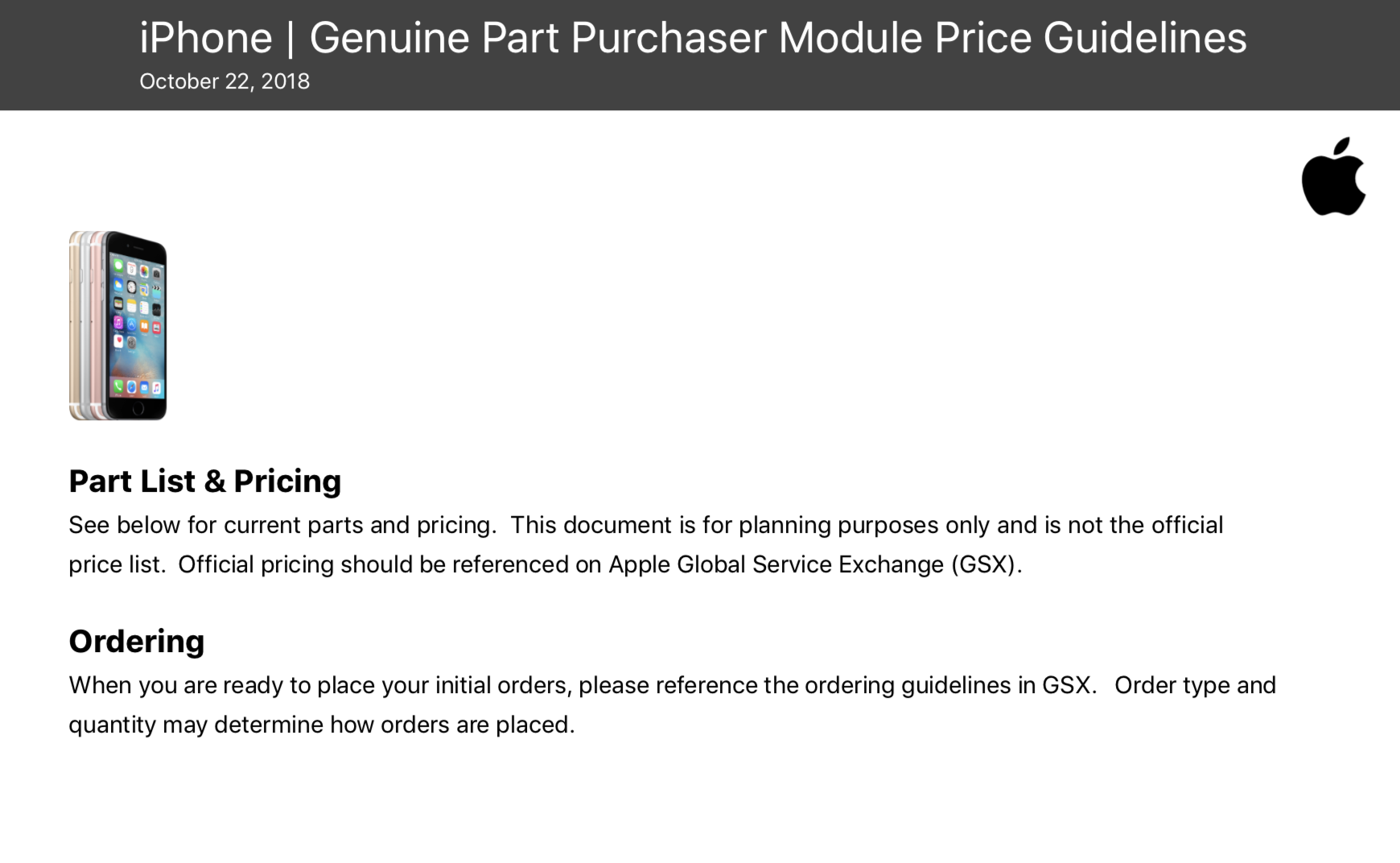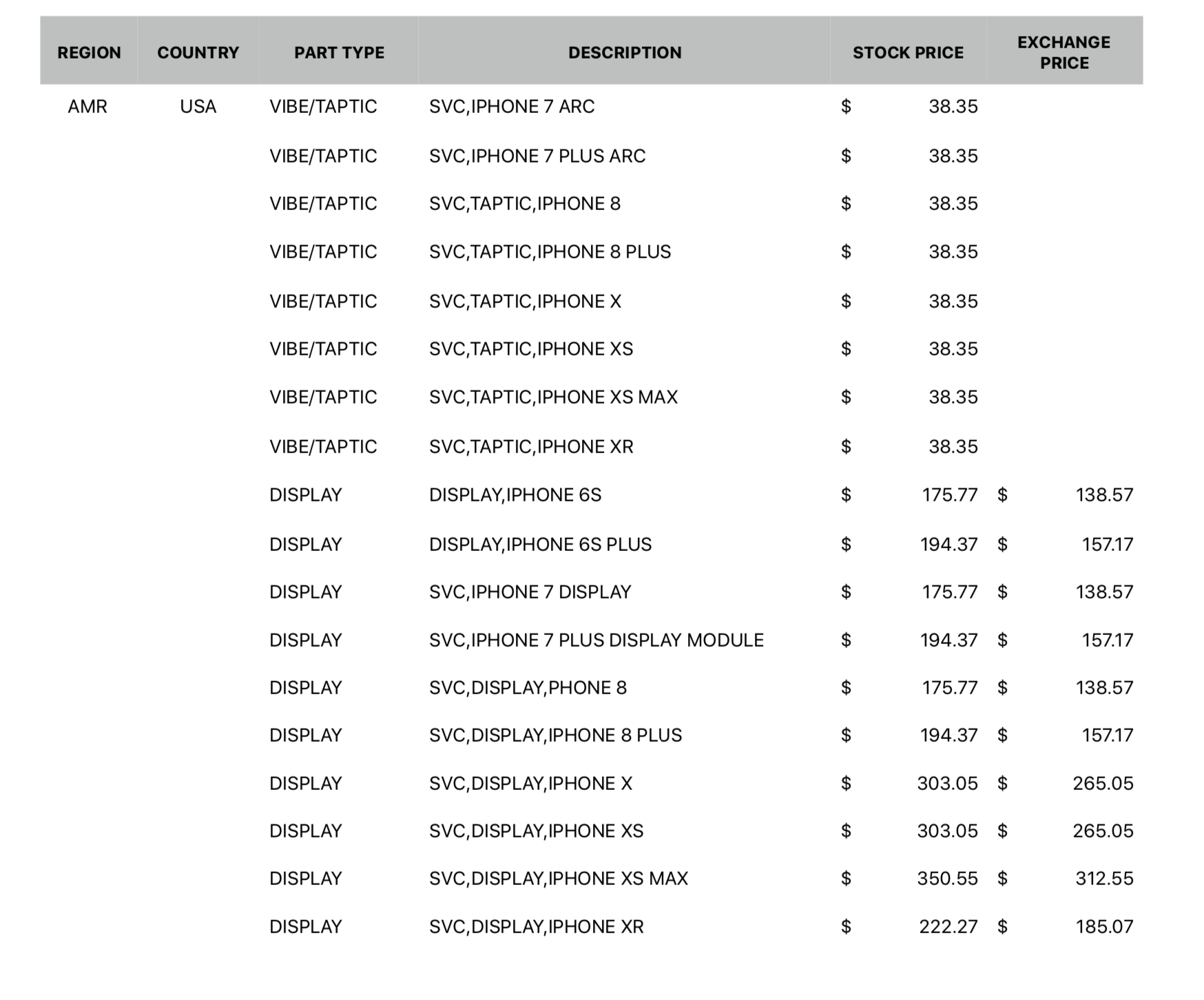After years of fighting independent repair, Apple is rolling out a program that will allow some independent companies to buy official parts, repair tools, and diagnostic services outside of the company’s limited “authorized” program. It’s a big win for the right to repair movement, but it doesn't mean that Apple will allow its customers to always repair the devices they own, and the program has shortcomings.
The “Independent Repair Provider Program” was first reported by Motherboard back in March, when it was being piloted by just a few independent repair professionals. Apple said in a blog post that the program will be rolled out more widely, and that anyone who has a repair shop in a “commercially zoned area” and is willing to become certified by Apple through a free program is eligible to apply.
This is great news on a few fronts: First, it illustrates that Apple is responding to pressure from the right to repair movement, which is trying to break repair monopolies at big tech companies through state-level legislation that would require companies to sell repair parts, make diagnostic software and repair tools available, and make repair guides available. Second, it will have the very real effect of making it easier for people to get their iPhones repaired in rural areas and countries without many Apple Stores.

But Apple’s new program is far from what the right to repair movement has been asking for, and still allows the company to set the terms under which consumers can repair the devices they own. Apple isn’t going to begin selling parts to the general public, it’s not going to sell to people who repair phones out of their homes, and it’s only making the program available to people who meet specific requirements.
“It’s a direct reversal, but big questions remain,” Nathan Proctor, who is leading the right to repair efforts by consumer rights group US PIRG said. “There is a lot of ground between this and truly getting to decide who fixes our devices, but every step they take toward our requests for the right to repair show that our campaign is effective, and that Apple—or any other manufacturer—could easily comply.”
According to internal Apple documents and parts price lists obtained by Motherboard in March, Apple is also selling a limited number of parts. These include iPhone batteries, cameras, speakers, and displays. This means Apple isn’t going to allow independent repair professionals to do a wide variety of repairs (for example, as of October 2018, it wasn’t selling charging ports for iPhones, a part that is both easy to replace and commonly needs replacement on older iPhones.) According to the price list, Apple is only selling parts dating back to the iPhone 6S, which means older models might not be supported, either.
Buying these new parts from Apple is also still more expensive than buying original but refurbished parts, which are commonly used by independent repair companies. Because the parts are new, that makes sense, but experts in the right to repair world say that Apple is likely selling these parts for a profit, and for much more than refurbished original or aftermarket parts cost.
More expensive parts mean smaller profit margins for independent repair shops, which could disincentivize from using Apple's Independent Repair Provider Program. For example, in Apple's October 2018 price list, an iPhone XR replacement screen costs $222.27; an iPhone X replacement screen costs $303.05. iFixit is currently selling iPhone XR replacement screens for $99 and iPhone X replacement screens for $150 (wholesale prices through other vendors are even cheaper). An Apple representative told Motherboard those prices are no longer accurate but did not provide any information about current prices. Presumably, today's prices are lower because the iPhone XS, XR, and XS Max were new at the time.

This means that repair shops will have to pass those costs onto customers. Finally, according to that price list, Apple isn’t currently providing a mechanism for independent repair people to “pair” certain parts with repaired phones. This means, for example, that home buttons and Face ID cameras can’t be replaced.
“They will be selling more parts at list prices, which is a profitable line of business,” Gay Gordon-Byrne, executive director of The Repair Association, which is pushing for right to repair laws, said. “They don’t allow a whole host of repairs other than replacing consumables. It also looks clear to me that since they won’t sell the ‘advanced’ tools needed to allow paired parts to work, they remain a fully functional repair and reuse monopoly.”
from VICE https://ift.tt/30MdjIC
via cheap web hosting
No comments:
Post a Comment